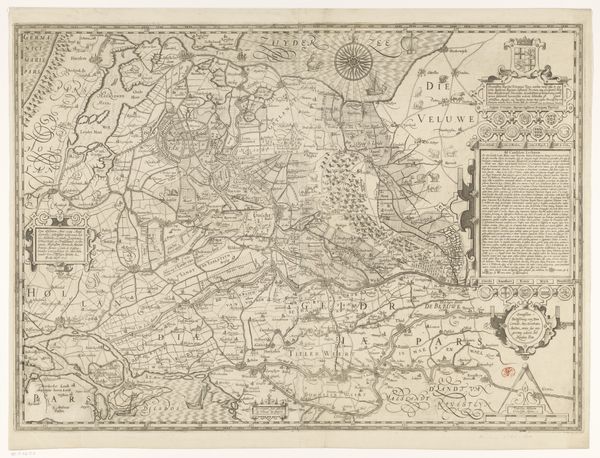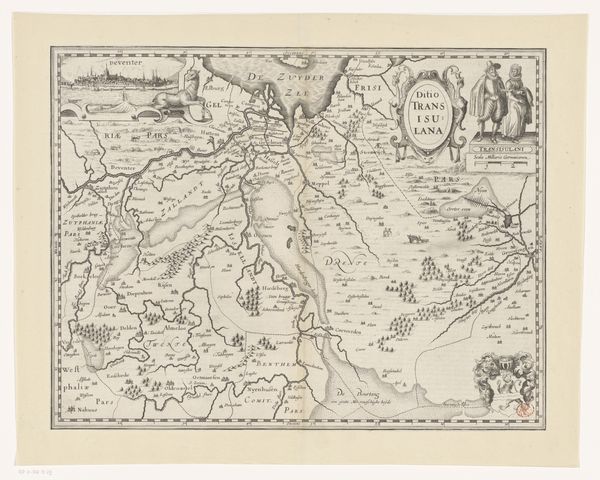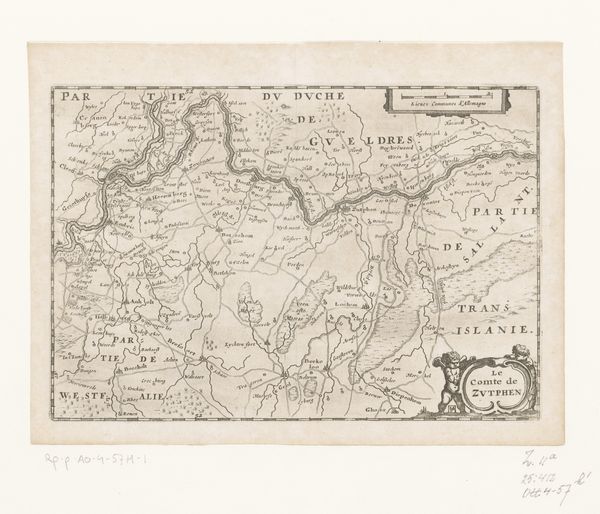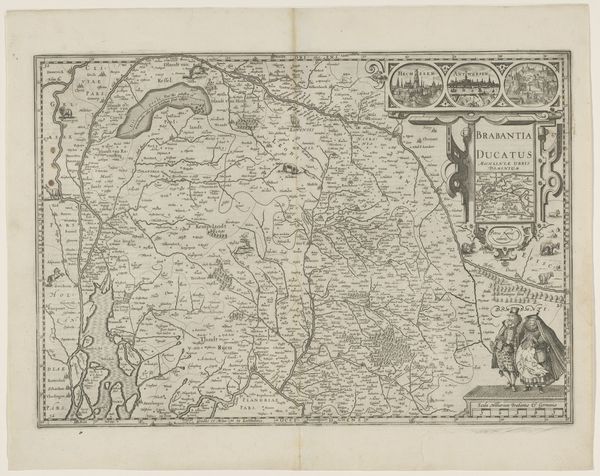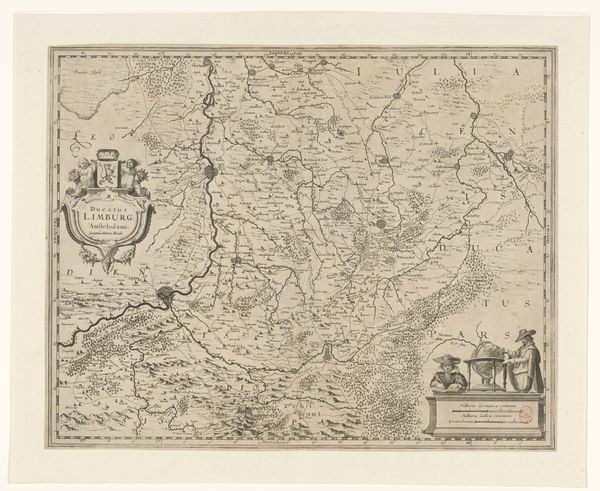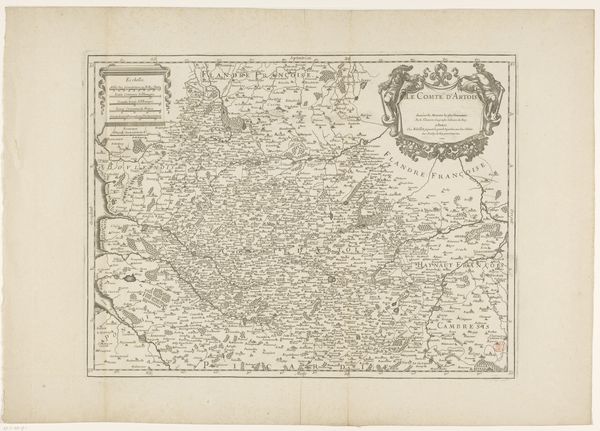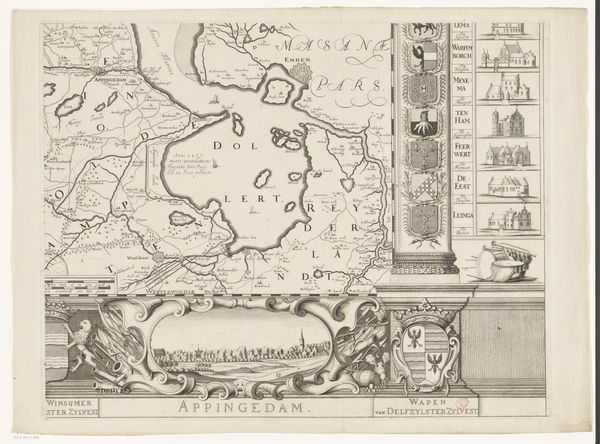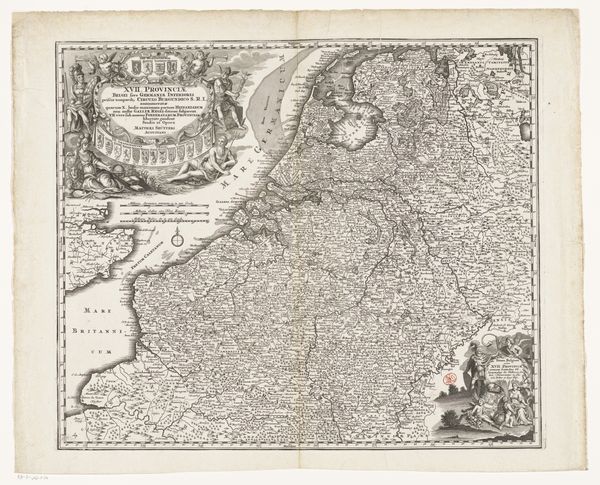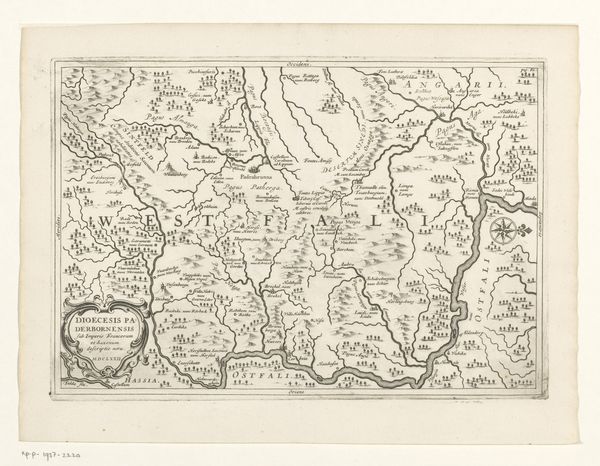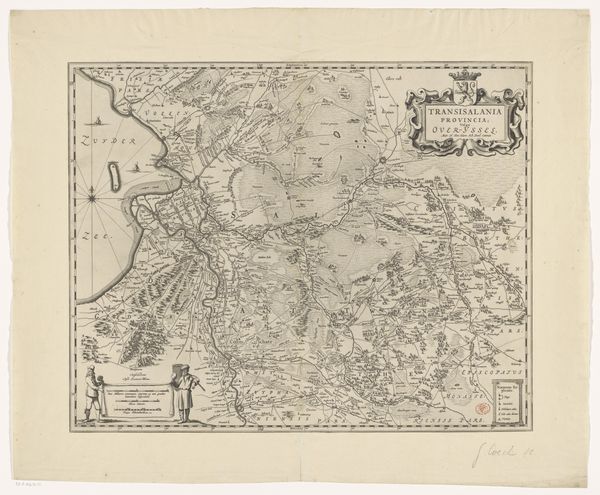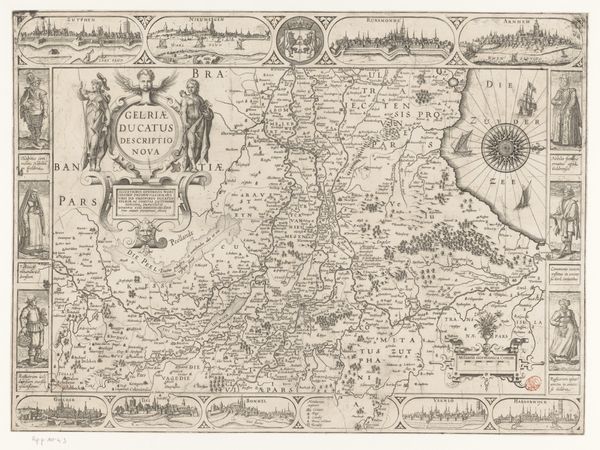
drawing, print, paper, ink, engraving
#
drawing
# print
#
pen illustration
#
landscape
#
paper
#
ink
#
cityscape
#
northern-renaissance
#
engraving
Dimensions: height 370 mm, width 478 mm
Copyright: Rijks Museum: Open Domain
Pieter van der Keere's map of Groningen, created around the early 17th century, presents us with symbols of power and identity, reflecting the cultural landscape of the time. Note the lions, guardians of the coat of arms, symbols of strength and sovereignty, recurring motifs throughout European heraldry, evoking ancient mythological beasts. These lions, flanking the inscription, remind us of similar figures guarding the gates of Mycenae, embodying protection and authority, and these motifs have persisted through the ages, carrying echoes of past empires and cultural memories. The map itself is a powerful symbol, charting not just geographical space, but also cultural and political claims. This urge to map and define territories resonates with humanity's deep-seated need to categorize and control our environment, a psychological drive that manifests in art across centuries. Consider the non-linear progression of these symbols. The lion motif, for instance, started as a pagan symbol, was adapted by Christianity, and resurfaced during the Renaissance as a symbol of civic pride. The emotional resonance of these images lies in their ability to evoke subconscious responses, engaging viewers on a primal level.
Comments
No comments
Be the first to comment and join the conversation on the ultimate creative platform.
